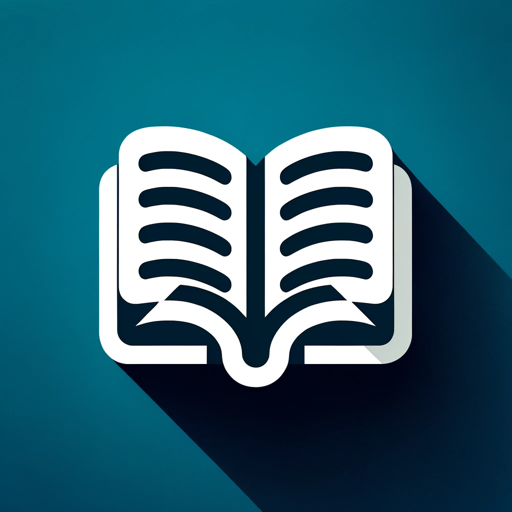Scholarly Gap Finder-AI tool for finding research gaps.
AI-Powered Research Gap Identification Tool.
SGF identifies research gaps using scholarly sources. It creates proposals with abstracts, literature reviews, and a reference list tailored for academic research.
Identify gaps in research surrounding memory and eye witness testimony
Find scientific sources on renewable energy, then write a proposal.
Vigilantism and political leaning
Develop a comprehensive analysis of wages over the lifetime and religion affiliation
Metacognition
Related Tools
Load More
SciSpace
Do hours worth of research in minutes. Instantly access 287M+ papers, analyze papers at lightning speed, and effortlessly draft content with accurate citations.

Academic Researcher
Assists in academic research and article writing.

Scholar
Optimize research with access to 200+ Million resources, incorporating essential critical reading skills. Seamlessly connect to Google Scholar, PubMed, JSTOR, Arxiv, and beyond. @Scholar

论文文献总结
深入且客观的论文指导专家,提供详尽的学术分析

Academic Literature Review Builder
Writes main argument in referenced academic paragraphs.

Source Finder
Sourcing academic quotes and journals expert
20.0 / 5 (200 votes)
Introduction to Scholarly Gap Finder
Scholarly Gap Finder is a specialized tool designed to assist researchers, particularly in academia, by identifying gaps in existing literature across various disciplines. Unlike general-purpose AI models, Scholarly Gap Finder is purpose-built to support scholarly inquiry by focusing on the discovery of underexplored areas in research. This allows users to pinpoint opportunities for novel contributions to their fields. The tool leverages advanced web search techniques and a deep understanding of academic standards to locate, analyze, and synthesize peer-reviewed articles, helping users draft research proposals and papers that address these gaps. For example, a PhD student studying the impact of social media on mental health might use Scholarly Gap Finder to discover that while there is extensive research on the effects of social media on adolescent mental health, there is a significant gap in understanding how different social media platforms specifically influence adult mental health. Scholarly Gap Finder would assist in outlining this gap, providing references, and suggesting potential research directions.

Main Functions of Scholarly Gap Finder
Identifying Research Gaps
Example
A researcher studying renewable energy might use Scholarly Gap Finder to uncover that while much research exists on solar and wind energy, there is limited exploration into the integration of tidal energy into national grids.
Scenario
The researcher could then focus their study on this less explored area, potentially leading to significant advancements in renewable energy integration techniques.
Literature Review Assistance
Example
A graduate student preparing a thesis on machine learning applications in healthcare could use Scholarly Gap Finder to gather relevant studies, identifying both well-established findings and areas lacking comprehensive study.
Scenario
This enables the student to structure their literature review effectively, highlighting the novelty of their proposed research and situating it within the existing body of knowledge.
Research Proposal Development
Example
An academic preparing a grant proposal on urban planning might find that while there is extensive research on smart cities, there is a lack of studies on the socio-economic impacts of smart city technologies in rural areas.
Scenario
Scholarly Gap Finder helps by providing a detailed review of the literature and suggesting potential methodologies to address this gap, thereby strengthening the grant proposal.
Ideal Users of Scholarly Gap Finder
PhD Students and Academic Researchers
PhD students and researchers are the primary users of Scholarly Gap Finder. They benefit from the tool's ability to identify research gaps, which is crucial in developing original and impactful dissertations, theses, and research papers. By pinpointing areas that are underexplored or emerging, these users can ensure their work contributes new knowledge to their field.
Grant Writers and Academic Professionals
Grant writers and academic professionals who are responsible for securing funding for research projects also find great value in Scholarly Gap Finder. The tool aids in developing compelling research proposals by identifying areas where new research could have significant impact, thus increasing the likelihood of funding.

Guidelines for Using Scholarly Gap Finder
Visit aichatonline.org for a free trial without login.
Start by navigating to aichatonline.org, where you can access Scholarly Gap Finder without needing a login or subscription, even without ChatGPT Plus.
Define Your Research Topic or Question.
Clearly state the research topic or question you want to explore. This helps Scholarly Gap Finder identify relevant literature and uncover potential gaps.
Analyze Existing Literature.
Use the tool to search for and analyze existing peer-reviewed sources on your topic. Focus on identifying areas where research is sparse or where further exploration could be beneficial.
Identify Gaps in the Literature.
Based on the analysis, Scholarly Gap Finder will highlight gaps in current research, allowing you to formulate new research questions or identify under-explored areas.
Refine and Expand Your Research.
Utilize the identified gaps to refine your research question, develop a hypothesis, or design a study that contributes new knowledge to your field.
Try other advanced and practical GPTs
Data Interpretation
AI-powered insights for your data.

Supertools GPT Finder
AI-Powered GPT Finder for Your Needs

Figmo
AI-Powered Plugin Development for Figma

漫画背景メーカー(Manga Background Maker)
AI-powered backgrounds for manga creators.

Photorealistic PRO
AI-powered, photorealistic image creation.

Documentary Style Images
Create stunning documentary-style images with AI precision.

Copy Edit Pro
AI-powered copyediting, tailored for journalism.

Consulting Expert for Strategy and Transformation
Transform Business Strategy with AI Power.

Apache Kafka Expert
AI-powered Kafka expertise at your fingertips.

Image Generator Tool
AI-driven creativity for everyone.

Free Character Consistency AI Tool - Snowballai.io
AI-Powered Character Design Consistency.

editGPT
Refine your writing with AI-powered precision.

- Academic Research
- Literature Review
- Thesis Development
- Gap Analysis
- Study Design
Common Questions About Scholarly Gap Finder
What is the primary function of Scholarly Gap Finder?
Scholarly Gap Finder helps researchers identify gaps in existing literature, enabling them to focus on under-explored areas and contribute original research to their fields.
Do I need to log in or pay to use the tool?
No, Scholarly Gap Finder can be accessed for free at aichatonline.org without the need for login credentials or a paid subscription.
How does Scholarly Gap Finder differ from other research tools?
Unlike other tools that provide general literature reviews, Scholarly Gap Finder specifically focuses on uncovering gaps in existing research, helping users identify novel research opportunities.
Can Scholarly Gap Finder be used for any academic discipline?
Yes, Scholarly Gap Finder is designed to be versatile and can be used across a wide range of academic disciplines, from the humanities to the sciences.
Is the tool suitable for both novice and experienced researchers?
Absolutely. Scholarly Gap Finder is intuitive enough for novice researchers to use effectively while providing the depth and precision needed by experienced scholars.